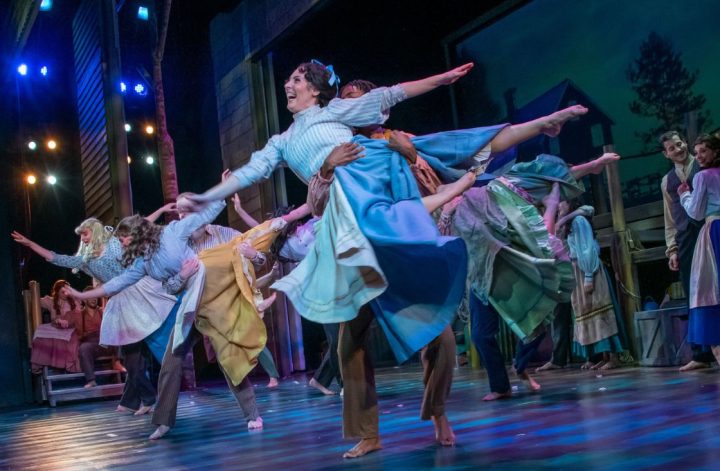Few scripts have had more cultural influence than Henrik Ibsen’s A Doll’s House. First performed in 1879, the play incited much controversy when protagonist Nora challenged the period’s social norms by walking out on her husband and children after coming to the realization that her stifling marriage would never allow her to be her true self. And when she did, according to critic James Huneker, the door that she slammed behind her “reverberated across the roof of the world.”
But it’s a door that playwright Lucas Hnath dares reopen a century later in A Doll’s House Part 2, which begins when Nora walks back through it and into her former home a full fifteen years after her earth shattering exit.
After striking out on her own, Nora has done quite well for herself as a writer, penning works inspired by her own life that have encouraged some other women to follow in her footsteps and leave their own marriages as well. Public umbrage at Nora’s revolutionary ideas then lead to legal troubles that have driven her reluctantly home in hopes of resolving them.
It’s a thought experiment that spawned a reasonably witty and entertaining play, though one that perhaps falls a bit short of living up to the challenge posed by its bold concept.
But Hnath does well at setting the scene for any viewers who have not seen the original Doll’s House and making the show as humorous as it is weighty. In a way, his Part 2 echoes the structure of that original, revolving around a series of slowly unfolding dilemmas rooted in the characters’ pasts that ignite deep-set conflicts when they resurface.
Yet the mechanisms of plot that result feel somehow forced, creating something that feels more like a series of interesting arguments than a fully captivating “story.” These arguments mostly revolve in some fashion or another around the idea of marriage and what moral right Nora had to leave hers.
Nora played by actress, Suzanne Dunn.
Hnath’s Nora is as headstrong as Ibsen’s, but the lauded feminist heroine here comes across as surprisingly unsympathetic. And that’s no fault of leading actress Suzanne Dunn, whose comedic timing and emotional range allow her to ably carry the show.
Instead, it springs from how much the narrative emphasizes the effects Nora’s sudden departure harms those she has left behind in her quest for self-actualization. This is even suggested visually by a set that includes a wall of empty picture frames, suggesting the sparser existence that her family has lived without her.
Anne Marie played by actress, Diane Gilch.
That family includes not only her husband and children but their nanny Anne Marie, whose presence as a key character raises issues of class the original Doll’s House was content to mostly gloss over. Diane Gilch is pitch perfect in the part, and garners some of the show’s biggest laughs with well-timed deliveries of some very modern curse words that appear anachronistically in the script.
Torvald played by actor, Todd Caster.
Todd Caster also plays a surprisingly likable Torvald, a character who here comes across as a decent man who simply got far more than he bargained for in such an ahead-of-his-time wife.
Rounding out the cast is Sara Ptachik, who is a little more stilted and less dynamic as Nora’s daughter Emmy, but still convincingly conveyed her character’s self-assured air.
In Hnath’s imagination, Emmy has grown up to become a mature, poised young woman despite her mother’s abandonment. In fact, she is engaged to be married, which Nora finds incredibly unsettling. Thus, she tries to warn her daughter of the ways in which marriage tends to oppress women in particular – with wives nearly always having to suppress parts of themselves to appease their husbands, rather than vice versa.
Emmy played by actress, Sara Ptachik.



